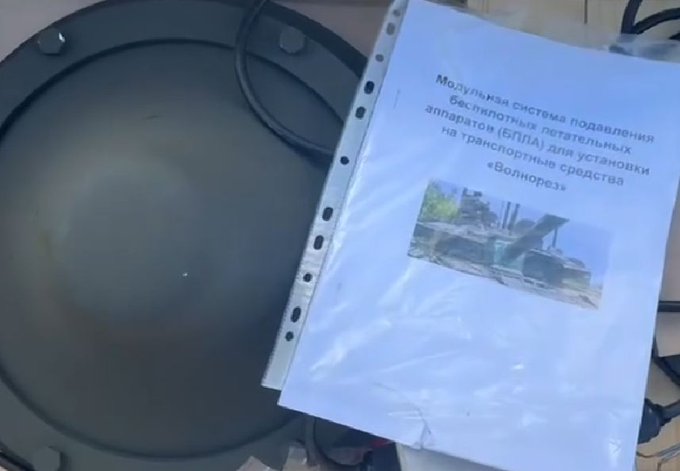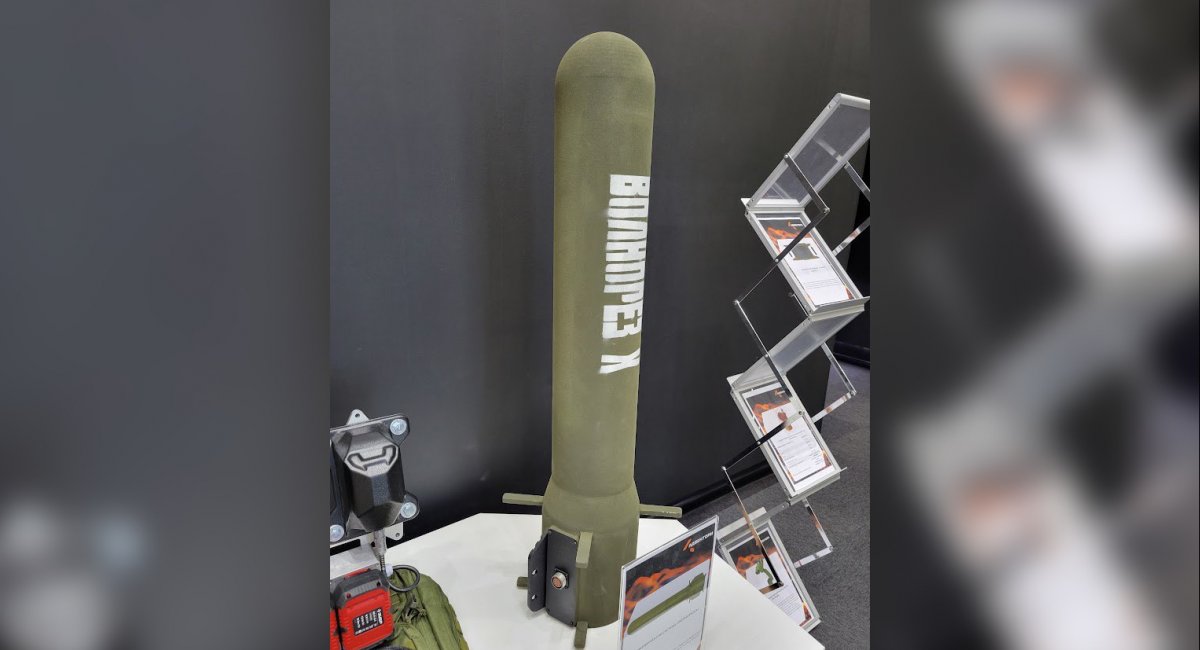Ukrainian Forces Capture russian Volnorez EW System in Kursk Region, Unveil Key Specs
In August 2024, Ukrainian military forces successfully captured russian Volnorez electronic warfare system in Kursk oblast, complete with its accompanying documentation. According to Ukrainian journalist Yuriy Butusov, who shared video footage of the captured equipment, the system was reportedly found still in its original packaging.
The Volnorez system, first observed in use by russian forces in autumn 2023, is designed to create a virtual protective dome around its carrier, typically tanks, to shield them from drone attacks. It specifically targets FPV drones, which have become increasingly common in modern warfare, Militaryi reports.
Captured documentation reveals that the Volnorez system operates within two specific frequency bands: 390-510 MHz and 750-1050 MHz. The device is cone-shaped and attaches to a tank’s armor using magnets.
When activated, the Volnorez system aims to disrupt the communication between an incoming drone and its control station, causing the drone to veer off course, thereby allowing the protected vehicle to avoid being hit. This method is particularly effective against the DIY-made FPV strike drones currently used by both sides in the war, which typically crash immediately upon losing signal. However, more sophisticated civilian drones, such as the Mavic 3, are designed to hover in place or return to their launch point when they lose communication with their operators.

As News Hub previously reported, in response to the Armed Forces of Ukraine successfully targeting russian helicopters with specialized FPV drones earlier this August, russian defense manufacturers have intensified their search for effective countermeasures.
At the ongoing Army-2024 defense industry expo in russia, the Adventori private company unveiled a counter-unmanned aerial system (C-UAS) solution. This new system, named Volnorez X, is an adaptation of existing Volnorez electronic warfare device, specifically designed for the deployment on helicopters.


